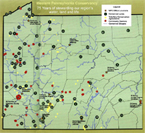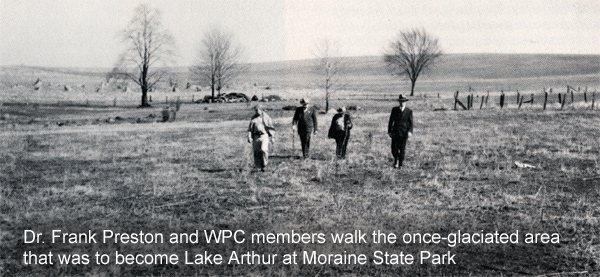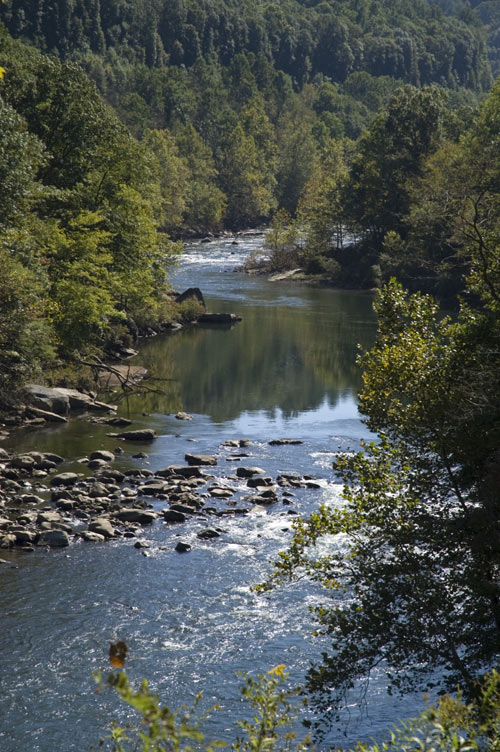|
Conserve |
|
| Conserve 75th Anniversary Commemorative Issue |
| 1930s - 40s |
| 1950s |
| 1960s |
| 1970s |
| 1980s |
| 1990s |
| 2000s |
| Fall 2007 Home |
| Past Issues |

The Importance of McConnell's Mill and Moraine State Parks
By Paul g. Wiegman
Walk Kildoo Trail in McConnell’s Mill and you wind through deep hemlock shade and pass massive sandstone boulders. The summer stream courses over and around more stone, but the modest water only whispers. Sun penetrates the deep narrow gorge at midday, so cool air clings to old forest slopes. After a hike in the Slippery Rock Creek Gorge you leave with a mood of tranquility.
But to geologists, the gorge conjures no serenity, for to their eye this is a cataclysmic landscape. The scientist sees the region as it was during the last Ice Age. Then, continental glaciers profoundly changed the waterways of western Pennsylvania. The Monongahela flowed north into the St. Lawrence valley. The Allegheny was three smaller streams going to the same place, and the Ohio a minor tributary of the Monongahela. Ice dammed the rivers and lakes that covered much of the region. Finally, water overflowed the old watershed divides and present river patterns formed.
Toward the end of glacial times, Muddy Creek was blocked with glacial debris. The resulting lake filled most valleys in present day Butler County. Then, as the climate warmed and ice retreated, rising waters topped the glacial dam and cut into the loose debris. A flood surge poured down Muddy Creek and into Slippery Rock Creek. The erosive water and glacial debris mixture took only a matter of days to engrave the deep narrow gorge we enjoy today.

Lake Arthur in Moraine State Park is a one-third sized reproduction of the original glacial lake that drained and carved the gorge in McConnell’s Mill State Park. Much of the geologic detective work necessary to reveal the glacial past was meticulously done by Dr. Frank W. Preston. It was Dr. Preston’s dream to recreate parts of that landscape.
However, he realized it was too big a job for one man, so Dr. Preston invited a group of prominent scientists, foundation officers, and local civic leaders to Whip-Poor-Will Hill on the south side of Muddy Creek for a view of the old lake bed and his vision for the future. The result of that working picnic was the decision to expand the work of the Greater Pittsburgh Parks Association to an organization that would also acquire land and protect the important glacial and natural areas of the region.
That meeting and Dr. Preston’s dream was the catalyst of expanding the mission and changing the name of the organization from the Greater Pittsburgh Parks Association to the Western Pennsylvania Conservancy.
Paul g. Wiegman began his career at the Conservancy as Naturalist-at-Large and later became Vice President for Science and Stewardship. WPC projects he had a hand in protecting include: Wolf Creek Narrows, Enlow Fork, Plaingrove Fens, Lake Pleasant, Tytoona Cave, and additions to the Bear Run Nature Reserve. Today, he regularly writes a column for the Pittsburgh Tribune Review and has seen his nature photography appear in many local, regional and national publications. The cover on this issue of Conserve is a Paul Wiegman photo. (see below)

The Youghiogheny River in Ohiopyle State Park as seen from the Great Allegheny Passage
